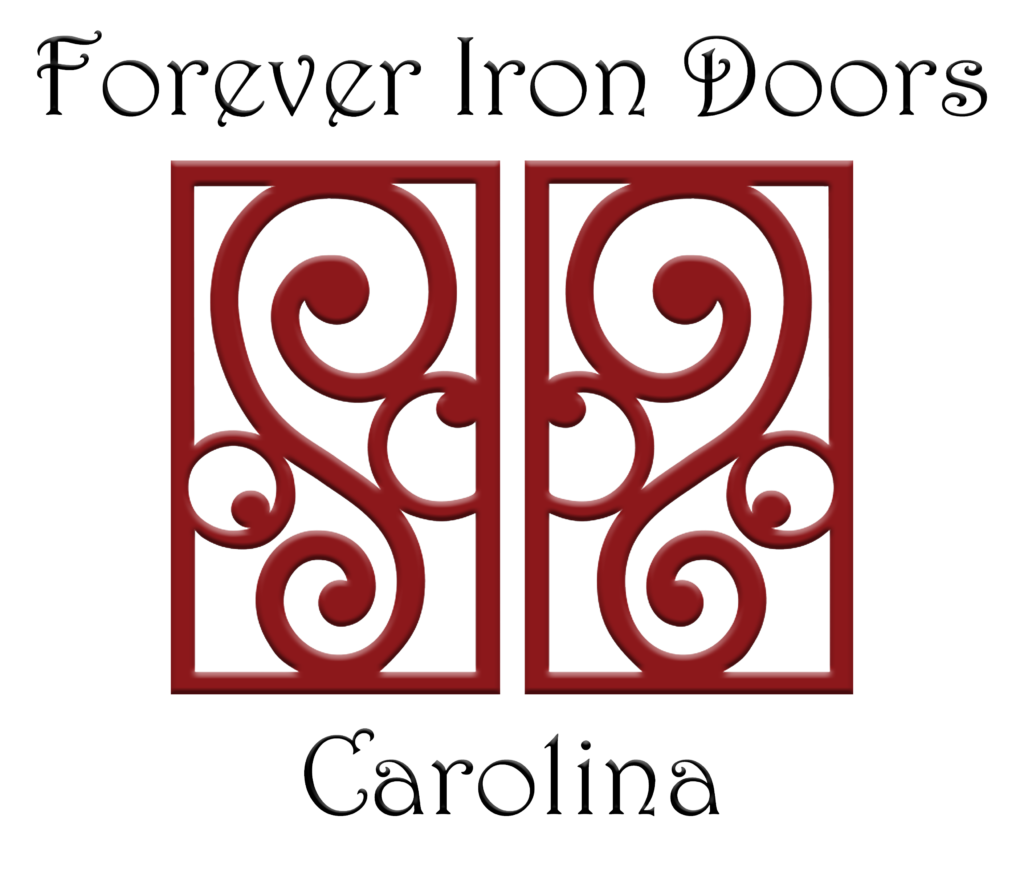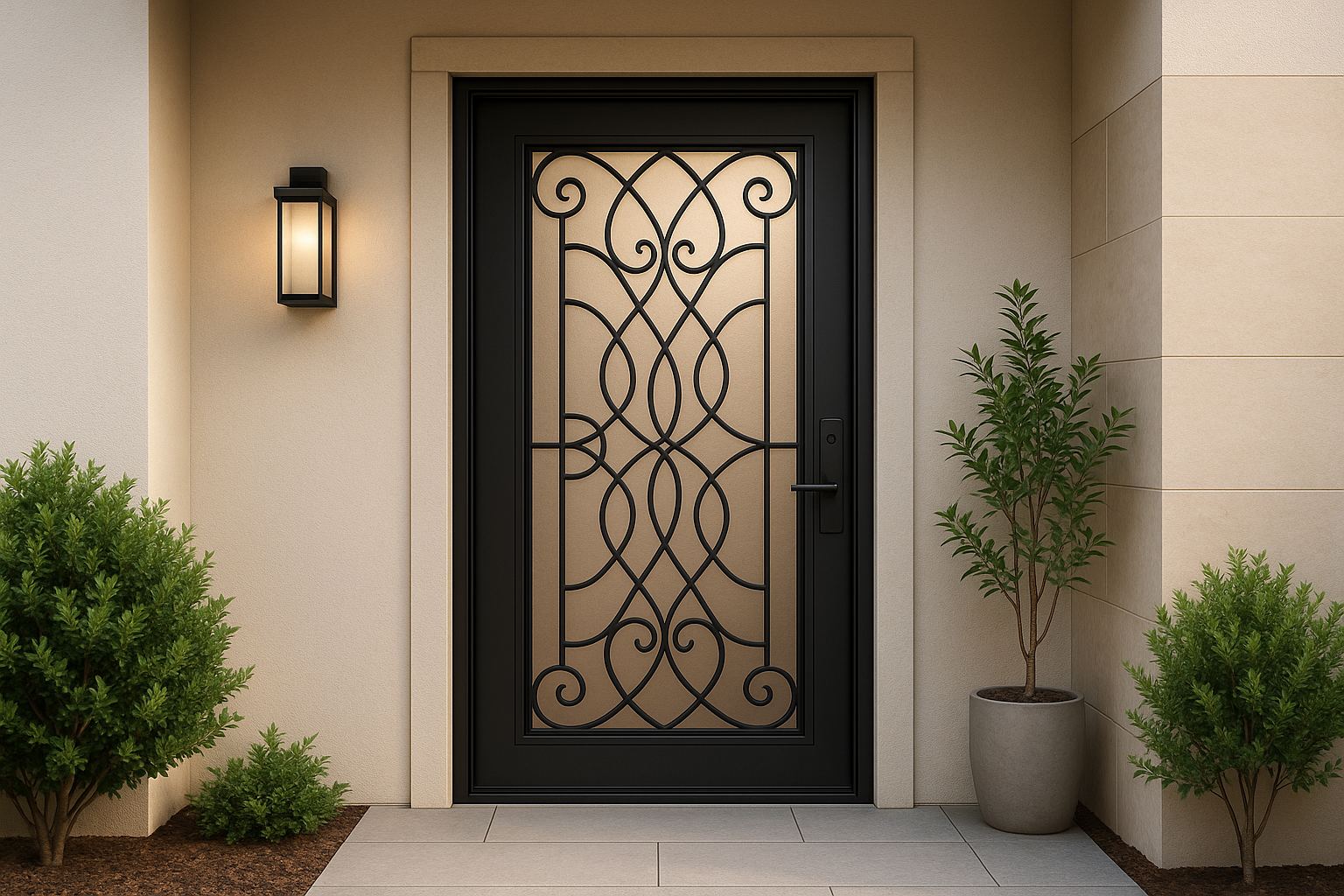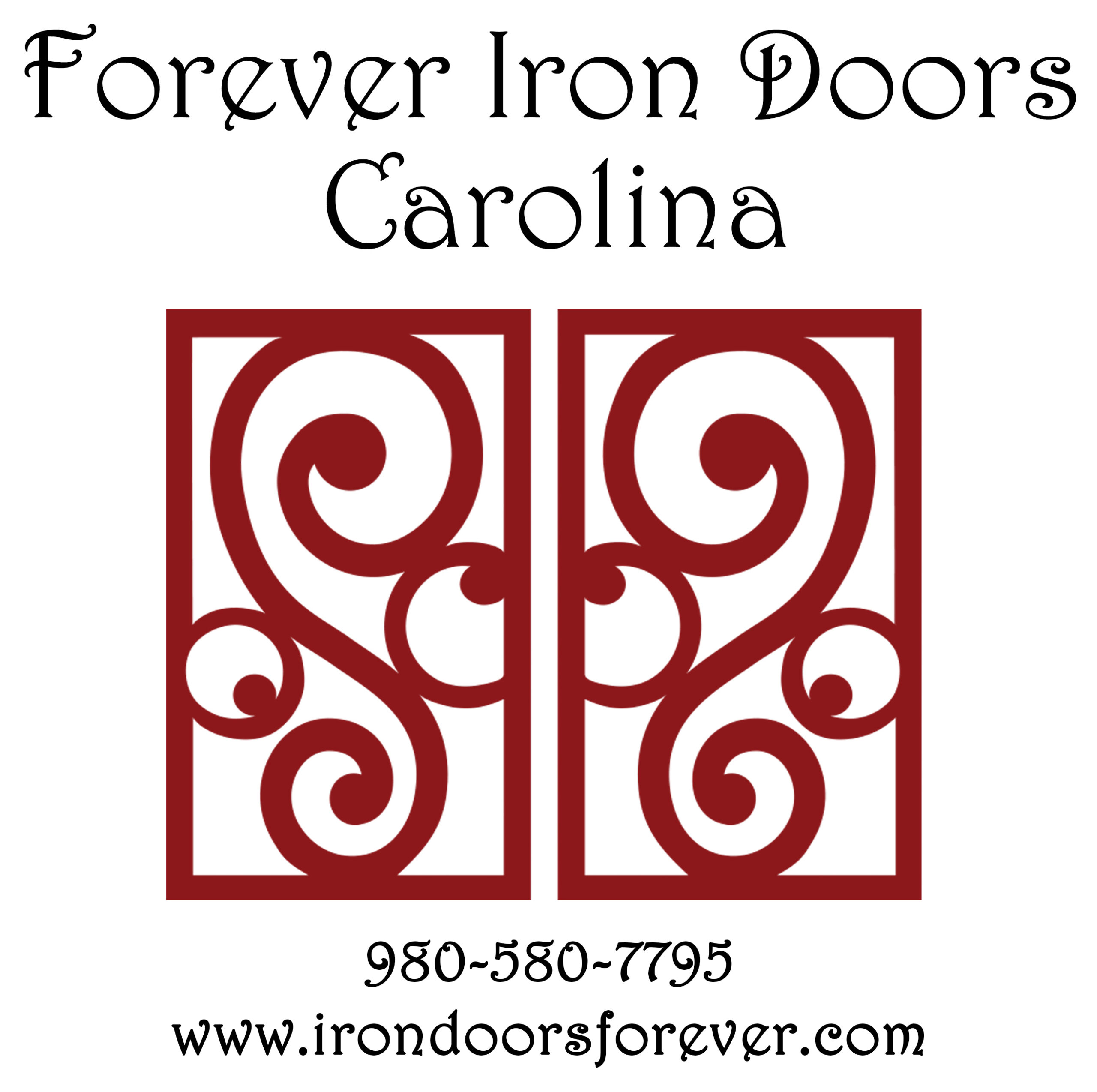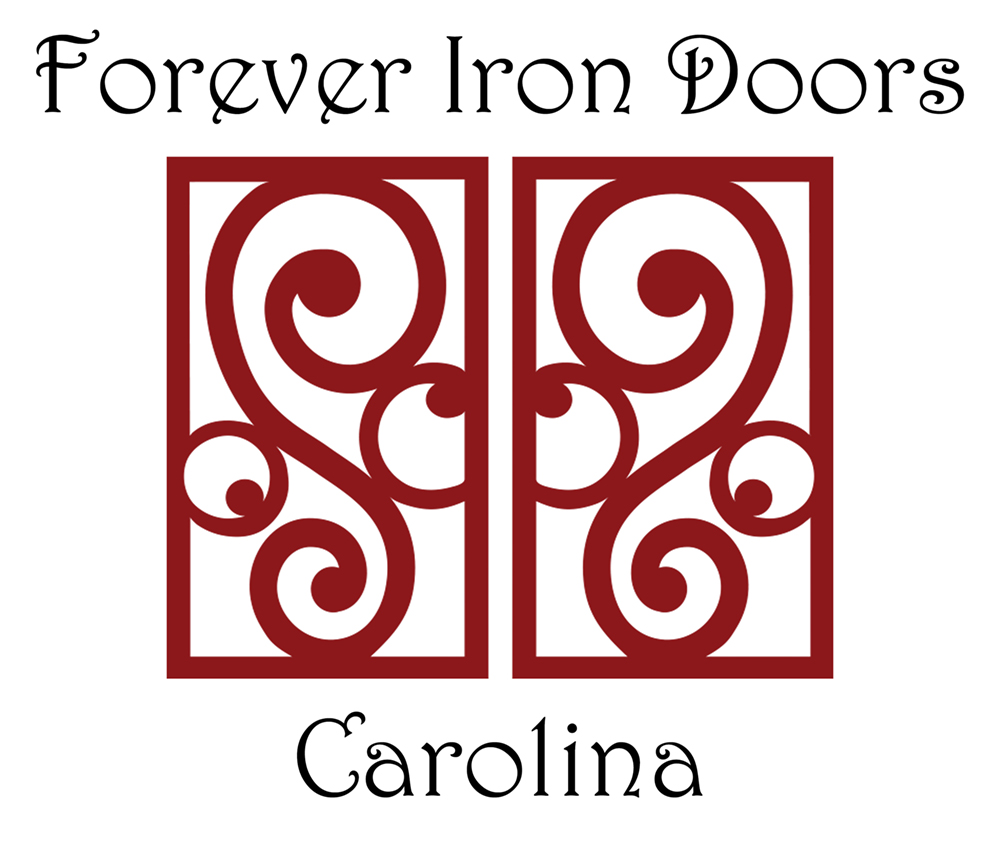Your front door is more than just an entryway – it’s a statement piece and your home’s first layer of protection. Iron doors combine strength and elegance, offering durability, security, and customizable designs that suit various architectural styles. Here’s how to design one that balances aesthetics and functionality:
- Style & Design: Match your home’s architecture, choose between single or double doors, and balance privacy with natural light using textured glass options.
- Measurements: Accurate dimensions ensure proper fit. Measure width, height, and wall thickness carefully, and decide on swing direction and hardware placement.
- Materials & Features: Use high-grade steel or wrought iron, reinforced frames, and weather-resistant finishes. Add security features like multi-point locks and heavy-duty hinges.
- Glass & Hardware: Select glass for light and privacy, and use Grade 1 deadbolts, smart locks, and corrosion-resistant hardware for durability.
- Professional Installation: Work with experts to ensure proper alignment, structural adjustments, and compliance with local building codes.
For homeowners in North and South Carolina, iron doors are particularly effective against humidity, salt air, and harsh weather. Use marine-grade finishes and reinforced designs for long-term performance, especially in coastal areas. Partnering with professionals ensures a flawless installation and lasting results.
Step 1: Choose Your Door Style and Design
Picking the right door is about more than just looks – it’s about finding a design that complements your home’s character, fits your personal style, and offers the security you need. Your door should strike a balance between visual appeal and practical functionality.
Match Your Home’s Architecture
Your door should harmonize with your home’s overall design. For example, traditional Southern homes often pair beautifully with classic scrollwork and intricate details. Modern homes, on the other hand, shine with clean lines and geometric patterns, while Mediterranean-style homes are well-suited to arched tops and detailed ironwork.
Think about the size of your entryway when deciding between a single or double door. Adding decorative transoms or sidelights can elevate the look, bring in natural light, and create a sense of spaciousness. Just make sure the size of these decorative elements aligns with your home’s proportions – larger homes can handle bold ironwork, while smaller homes look better with more delicate patterns.
Balance Privacy and Natural Light
Choosing the right glass for your door is key to balancing light and privacy. Textured glass options like Aqualite (for maximum privacy), Aquatex (a frosted look), Pinhead (fine texture), Hammered (a dimpled effect), or Reed (sleek and modern) allow light to filter in while keeping prying eyes out.
Combine frosted or patterned glass with an iron grille design for added security and elegance. Sidelights with decorative glass can also brighten your entryway without compromising privacy or safety.
Get the Right Size and Scale
The proportions of your door are just as important as its design. Ensure the stiles, rails, and decorative elements are scaled to fit your door’s dimensions. Overly dense patterns can make a door feel smaller, while open designs create a more expansive look.
The thickness of the iron bars also plays a role. Thicker bars give off a strong, security-first impression, while thinner bars lean more toward decorative refinement. Be sure to measure your door opening, ceiling height, and entryway width carefully to ensure everything fits together seamlessly. Once you’ve nailed down your style and dimensions, you’re ready to move on to precise measurements and planning in the next step.
Step 2: Measure and Plan Your Door Opening
Getting the measurements right is a must for a smooth installation and proper door operation. Even small errors can lead to frustrating and costly fixes down the road, so double-check everything before moving forward.
Take Precise Measurements
Start by measuring the width and height of the door opening. For width, check at three points: the top, middle, and bottom. For height, measure both sides and the center. Use the smallest measurement for each to ensure accuracy. While standard exterior doors are usually 36 inches wide, custom iron doors can range from 30 to 48 inches. Most residential doors are about 80 inches tall, but some can reach 84 or even 96 inches in homes with higher ceilings.
Next, measure the wall thickness, also called the jamb depth. In most homes, this ranges from 4.5 to 6.25 inches. If you’ve added new flooring, keep in mind that the floor level might have been raised by 0.5 to 1 inch, so account for that when measuring.
Make sure to record all measurements in inches, and take note of any irregularities in the door frame. This is especially important in older homes, where openings may not be perfectly square. Once you have accurate dimensions, you can move on to determining the door’s swing direction and hardware placement.
Choose Swing Direction and Hardware Placement
Deciding whether your door swings inward or outward is more important than it might seem. Inswing doors are the standard choice for most homes since they help with smooth traffic flow and keep hinges safely inside.
On the other hand, outswing doors come with their own benefits. They’re often heavier and feature welded hinge systems, which make them harder for intruders to force open. They also provide a faster and safer exit in emergencies since they’re less likely to get blocked by debris or furniture.
Your available space will play a big role in this choice. If the area inside your entryway is tight, an outswing door could help maximize usable space.
When it comes to hardware, figure out whether your door is left-handed or right-handed. To do this, stand outside facing the door. If the hinges are on the left, it’s a left-handed door. If they’re on the right, it’s right-handed. This will guide the placement of your lockset, handle, and deadbolt.
Plan Frame and Jamb Setup
Once you’ve decided on the swing direction and hardware, focus on the framing. Iron doors are heavy, typically weighing between 150 and 300 pounds depending on their size and whether they include glass. The frame needs to be strong enough to handle this weight. A 14-gauge steel jamb is standard, but you might want to go with 12-gauge steel for added durability and security.
Make sure the frame is anchored securely to the wall studs, not just the drywall. Identifying stud locations is key for a solid installation.
Don’t forget to think about the weatherstripping system. High-quality weatherstripping often requires specific jamb profiles and clearances. Aim for about 1/8 inch of clearance around the door to ensure a tight seal without interfering with the door’s movement.
If you’re replacing an old door, take a close look at the existing frame. Can it be reused, or will you need a new one? Iron doors usually need sturdier frames than standard wooden doors, so it’s a good idea to have a professional assess the situation before making a decision.
Step 3: Select Glass, Hardware, and Finishes
Once you’ve nailed down your measurements and planning, it’s time to focus on the details that bring your door to life: the glass, hardware, and finishes. These choices don’t just shape how your door looks – they also impact its durability, security, and overall performance.
Choose the Right Glass
The glass you pick sets the tone for how much natural light, privacy, and security your door provides. If you’re aiming for a bright and open entryway, clear glass is a great option. Pair it with decorative iron grilles for an extra layer of protection without losing that welcoming, open feel.
For those who want more privacy but still love the idea of natural light streaming in, textured glass is a go-to choice. It features patterns that scatter light beautifully while keeping prying eyes out.
- Aqualite glass: Known for its rippled texture, it offers high privacy while diffusing light in a way that feels warm and inviting.
- Aquatex glass: This option has a frosted, wavy look that balances light flow with privacy.
Once you’ve settled on the perfect glass, it’s equally important to select hardware that keeps your door secure and functional.
Pick Strong Security Hardware
Your hardware isn’t just about aesthetics – it’s the backbone of your door’s security. Start with a Grade 1 deadbolt. This top-tier residential lock offers a 1-inch throw bolt and is designed to withstand heavy force.
For even more protection, consider multi-point locking systems. Unlike a single deadbolt, these systems lock the door at multiple points – top, middle, and bottom – spreading out the force and making break-ins far more challenging.
When it comes to handlesets, durability is key. Look for solid brass or stainless steel options, as hollow or plated hardware can fail under pressure. Make sure the strike plate is secured with 3-inch screws that anchor deeply into the wall framing.
Want to blend security with convenience? Smart locks are a modern solution. Many high-security deadbolts now come with features like keypad access, smartphone control, and activity tracking. Just ensure any smart lock you choose meets the same security standards as traditional Grade 1 hardware.
Don’t overlook the hinges – they’re just as crucial. Opt for heavy-duty ball bearing hinges with non-removable pins for better security. For outswing doors, welded hinges are a smart choice since they keep the pins completely inaccessible from the outside.
With your hardware sorted, the last step is choosing a finish that enhances your door’s look while standing up to wear and tear.
Choose Long-Lasting Finishes
The finish you select does more than add style – it determines how well your door handles weather, humidity, and daily use. The go-to option is powder coating, which creates a tough, chip-resistant surface.
- Black powder coat finishes: These are popular for their ability to hide minor scratches and maintain their sleek appearance over time. But keep in mind, darker finishes can absorb heat, making them hotter to the touch in direct sunlight – something to consider if your door faces south or west.
- Marine-grade finishes: Ideal for coastal areas or humid climates, these finishes include extra corrosion protection to combat salt air and moisture.
- Oil-rubbed bronze and antique copper: Perfect for traditional or rustic homes, these finishes often feature subtle color variations that mask fingerprints and minor wear.
Before applying any finish, the surface needs proper prep work. This includes sandblasting or chemical treatments to remove rust or contaminants, followed by a high-quality metal primer. This ensures the finish adheres properly and lasts longer.
Maintenance also varies depending on the finish. Powder-coated surfaces are low-maintenance, usually requiring just mild soap and water for cleaning. On the other hand, specialty finishes like oil-rubbed bronze may need occasional touch-ups or protective wax to keep them looking their best. If your door faces tough weather conditions, factor in these upkeep needs when making your choice.
Lastly, don’t forget about the hardware finish. It should not only match your door’s look but also hold up over time. PVD (Physical Vapor Deposition) coatings are an excellent option for hardware, offering exceptional resistance to wear and ensuring the color stays vibrant without fading or tarnishing.
Step 4: Build for Security and Long-Term Performance
Once you’ve chosen your design elements, it’s time to construct a door that combines style with solid protection. A well-built door not only enhances security but also stands the test of time, resisting both break-in attempts and the wear caused by weather. This means selecting tough materials and relying on proven construction techniques.
Use Strong Materials
The backbone of a secure iron door lies in the quality of its metal. Opt for high-grade steel or wrought iron for the frame and decorative components. These materials are less likely to warp and are far more resistant to forced entry. Reinforce every section of the door, using full penetration welds to ensure strong, long-lasting connections. Unlike spot welds, which can weaken over time, full penetration welds provide greater durability. For doors exposed to harsh weather, consider adding extra reinforcements behind decorative elements to protect against potential damage.
Add Security Features
Once the door’s structure is solid, take it a step further with additional security features. Reinforced strike plates and through-bolting can transform your door into a formidable barrier. Internal steel plates around lock cylinders and strike zones help to distribute impact forces, making it harder for intruders to damage the locking mechanism. To make forced entry even more difficult, include security studs and anti-lift pins, which prevent the door from being pried or lifted off its hinges.
Protect Against Weather
Weatherproofing is just as important as security when it comes to long-term performance. Start with a threshold system designed to block drafts and prevent water from seeping in. Use multi-layered weatherstripping to seal out air and moisture while still allowing for proper ventilation to avoid condensation. Features like drainage channels or weep holes can help eliminate trapped moisture. If your door is in a coastal area, choose corrosion-resistant hardware, such as galvanized or stainless steel, to prevent rust. Finally, account for the natural movement of metal by incorporating thermal expansion joints and resealing exposed areas periodically. These steps will help maintain a tight, weatherproof seal for years to come.
sbb-itb-cd90297
Step 5: Work with Professionals for Fabrication and Installation
Once your design is finalized and all the details are locked in, it’s time to focus on bringing your custom iron door to life through expert craftsmanship and installation. Even the most well-thought-out design can fall short without proper execution. Skilled professionals ensure your door not only looks stunning but also operates seamlessly and provides the durability and security you expect. Partnering with experienced fabricators and installers helps you avoid costly mistakes and ensures your investment stands the test of time.
Review Drawings Before Fabrication
Before any metal is cut or welded, take the time to carefully review the fabrication drawings with your contractor. These technical plans should detail every measurement down to 1/8 inch, including the door’s height, width, and thickness. Double-check that the hardware placements align perfectly with your chosen locks and hinges.
Glass specifications and installation methods should also be clearly outlined. Additionally, ensure the finish details are precise, covering primer types, paint systems, and any treatments designed for specific conditions, like coastal environments.
Pay close attention to the structural reinforcements shown in the drawings, especially around lock cylinders and hinge mounting points. These areas often require hidden steel backing plates to enhance security. If anything in the drawings seems unclear, ask for clarification before approving them. Thoroughly verified plans are the foundation for a flawless fabrication and installation process.
The Importance of Professional Installation
Precision installation is just as critical as the design and fabrication process. Iron doors are heavy – typically weighing between 150 and 400 pounds – so professional handling is essential to ensure safety and proper functionality. Experts use specialized tools to position the door accurately without causing damage to the door or the surrounding structure.
In many cases, installing an iron door may also require structural adjustments. For example, the door frame might need reinforcement, or the rough opening may need resizing to support the door’s weight and security hardware. Professional installers understand how to distribute the load properly and secure the frame to structural elements like studs or concrete, ensuring long-term stability.
During installation, achieving proper alignment is key. Installers use tools like laser levels and shims to ensure the door is plumb and level. They also leave consistent gaps around the door for optimal weatherstripping performance, which helps maintain energy efficiency and protect against the elements.
Inspect the Finished Installation
After the installation is complete, conduct a thorough inspection to ensure everything is functioning as it should. Open and close the door to confirm it moves smoothly on its hinges and closes securely without any gaps in the weatherstripping.
Test all security hardware, including locks and deadbolts, to ensure they operate without resistance. Check that the strike plates align perfectly with the locking mechanisms and that all screws are securely tightened. Any misalignments or issues should be addressed immediately.
Inspect the weathersealing by looking for light gaps around the door when it’s closed. Run your hand along the perimeter to feel for any air leaks, and verify that the threshold seal compresses properly when the door is shut.
Companies like Forever Iron Doors Carolina specialize in comprehensive installation services, covering everything from precision fitting to framing adjustments and complete moisture sealing. Their expertise ensures your custom iron door functions perfectly from day one, delivering both security and weather protection for years to come.
Special Considerations for North and South Carolina
Designing an iron door for homes in North and South Carolina comes with unique challenges. From the humid coastal climate to strict building codes, several factors play a role in ensuring the door’s durability and compliance with local regulations.
Climate and Coastal Conditions
The Carolinas’ environment presents specific challenges for iron doors, especially in coastal areas. High humidity levels throughout the year, combined with exposure to salt air, can speed up corrosion and wear. Cities like Charleston, Myrtle Beach, and the Outer Banks face significant salt spray, which makes standard finishes insufficient for long-term durability. To combat this, iron doors should be treated with marine-grade coatings, such as zinc-rich primers and polyurethane topcoats, for enhanced protection against the elements.
Temperature fluctuations, ranging from summer highs around 90°F to winter lows in the mid-20s°F, can also impact weathersealing and hardware alignment. For maximum resilience, hot-dip galvanized steel with a multi-layer coating is recommended. This galvanizing process forms a durable bond that offers superior corrosion resistance compared to regular paint finishes, ensuring the door lasts longer.
Additionally, features like weep holes and sloped sills are essential to prevent water buildup, particularly during the heavy rainfalls common in the region.
Local Building Codes and Safety Rules
North and South Carolina have strict building codes that directly affect the design and installation of iron doors. Being familiar with these requirements is crucial to avoid costly delays or modifications during the permitting process.
In coastal counties, hurricane wind load regulations are a major consideration. Doors in these areas might need to endure wind pressures of 130–150 mph, which requires reinforced frames and impact-resistant glass. Local codes also mandate the use of tempered glass for residential properties and laminated glass for commercial installations. Energy efficiency standards, such as a U-factor of 0.35 or lower, often necessitate double-pane, low-E glass units.
Fire safety codes further influence design choices, especially for commercial buildings. Exit doors must meet specific width standards, include panic hardware in certain cases, and comply with the Americans with Disabilities Act (ADA) for accessibility. Additionally, some jurisdictions may require structural calculations for heavy iron doors, particularly when modifying existing openings or installing doors in masonry walls.
To ensure a smooth process, it’s essential to verify all local permit requirements with the building department before finalizing the design. Partnering with professionals who understand these regulations can make all the difference.
Local Professional Services
Given the technical and regulatory complexities, working with local professionals is key to creating a secure and visually appealing iron door. Regional expertise ensures the right materials, coatings, and installation methods are used to address the specific challenges of the Carolinas.
Forever Iron Doors Carolina specializes in meeting the unique needs of North and South Carolina homeowners. Their experience with coastal installations highlights the importance of selecting materials and finishes that provide long-term durability in harsh environments. Their services cover everything from design consultations to final installation, including structural framing adjustments, precision fitting, and moisture-sealing systems tailored to the region’s climate. This includes extra corrosion protection for beachfront properties and reinforced construction for hurricane-prone areas.
Proper installation is especially critical in coastal settings, where inadequate sealing can lead to accelerated corrosion and structural damage. Forever Iron Doors Carolina’s installers are skilled at integrating iron doors with common wall systems in the Carolinas, such as brick veneer, stucco, and fiber cement siding.
Another advantage of working with a local provider is faster response times for maintenance or repairs. This is particularly valuable during hurricane season, when timely adjustments can help protect your investment and keep your home secure.
Conclusion: Finding the Perfect Balance Between Style and Security
A custom wrought iron door should seamlessly blend eye-catching design with dependable security. Every detail, from the choice of materials to the placement of hardware, plays a critical role in ensuring both functionality and visual appeal.
Precision craftsmanship and professional installation are key to achieving this balance. Whether you’re opting for intricate scrollwork to complement a traditional home or sleek, minimalist lines for a contemporary look, the door’s core structure must remain strong. Using thicker steel helps deter forced entry, while zinc galvanization paired with high-quality topcoats shields against harsh weather conditions.
Forever Iron Doors Carolina simplifies this process, guiding you from the initial design consultation to the final installation. With expertise tailored to regional climate demands and adherence to local building codes, they offer solutions like custom glass, corrosion-resistant finishes, and reinforced designs suited for hurricane-prone areas.
FAQs
What should I consider when choosing an iron door design that complements my home’s style?
When choosing an iron door design to complement your home’s architecture, it’s all about aligning the door’s features with the overall style of your house. For homes with a traditional or Mediterranean vibe, look for details like ornate scrollwork, intricate designs, and decorative finishes. On the other hand, if your home leans toward a modern or contemporary aesthetic, go for sleek, minimalist styles with clean lines and geometric patterns.
You can also personalize the look with options like glass panels, unique finishes, and stylish hardware to make the door a perfect match for your home. Beyond just looking great, a thoughtfully selected iron door can enhance your home’s curb appeal while providing added security and long-term value.
How can I protect my wrought iron door from the coastal climate in North and South Carolina?
To keep your wrought iron door in great shape despite the challenges of a coastal climate, start by using a high-quality weatherproof sealant or a protective coating specifically made for iron. This creates a barrier against rust and corrosion, which are common problems caused by salty air and high humidity.
Routine care is just as important. Wash the door regularly with mild soap and water to clear away dirt and salt deposits, and apply a rust inhibitor when needed. Make it a habit to check your door for any signs of damage or wear, and refresh the protective coating as required to preserve its strength and appearance. By following these steps, your door can remain sturdy and stylish, no matter the coastal conditions.
What are the key security features to include when designing a custom iron door for your home?
To get the most out of your custom iron door in terms of security, pay attention to critical features like durable wrought iron construction, reinforced frames, and sturdy, heavy-duty locks. These components work together to make the door resistant to break-ins.
For an extra layer of safety, you might want to look into tamper-resistant hardware, smart lock systems, and optional additions such as impact-resistant glass or security screens. These upgrades not only boost security but also keep the door looking elegant, offering a seamless mix of protection and style.



